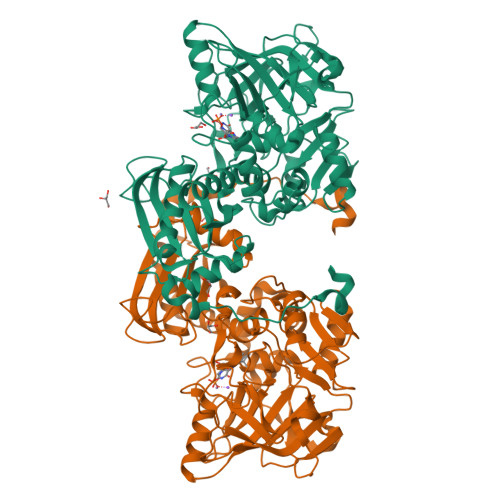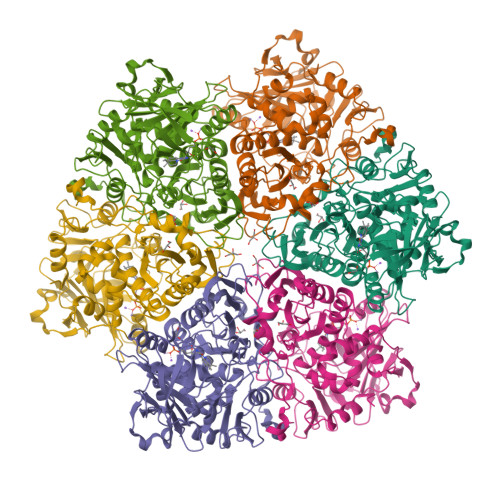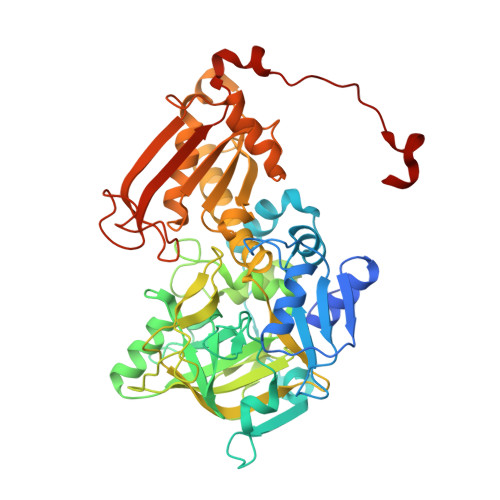Regioselective para-Carboxylation of Catechols with a Prenylated Flavin Dependent Decarboxylase.
Payer, S.E., Marshall, S.A., Barland, N., Sheng, X., Reiter, T., Dordic, A., Steinkellner, G., Wuensch, C., Kaltwasser, S., Fisher, K., Rigby, S.E.J., Macheroux, P., Vonck, J., Gruber, K., Faber, K., Himo, F., Leys, D., Pavkov-Keller, T., Glueck, S.M.(2017) Angew Chem Int Ed Engl 56: 13893-13897
- PubMed: 28857436
- DOI: https://doi.org/10.1002/anie.201708091
- Primary Citation of Related Structures:
5NY5, 5O3M, 5O3N - PubMed Abstract:
The utilization of CO 2 as a carbon source for organic synthesis meets the urgent demand for more sustainability in the production of chemicals. Herein, we report on the enzyme-catalyzed para-carboxylation of catechols, employing 3,4-dihydroxybenzoic acid decarboxylases (AroY) that belong to the UbiD enzyme family. Crystal structures and accompanying solution data confirmed that AroY utilizes the recently discovered prenylated FMN (prFMN) cofactor, and requires oxidative maturation to form the catalytically competent prFMN iminium species. This study reports on the in vitro reconstitution and activation of a prFMN-dependent enzyme that is capable of directly carboxylating aromatic catechol substrates under ambient conditions. A reaction mechanism for the reversible decarboxylation involving an intermediate with a single covalent bond between a quinoid adduct and cofactor is proposed, which is distinct from the mechanism of prFMN-associated 1,3-dipolar cycloadditions in related enzymes.
Organizational Affiliation:
Department of Chemistry, Organic & Bioorganic Chemistry, University of Graz, NAWI Graz, BioTechMed Graz, Heinrichstrasse 28/2, 8010, Graz, Austria.






















